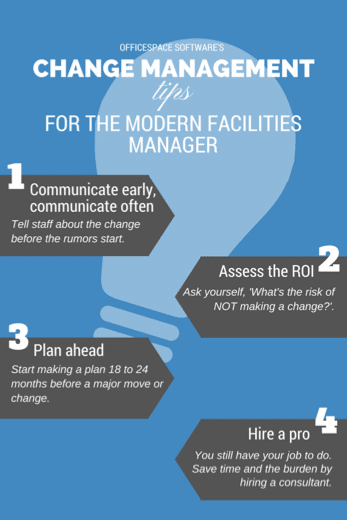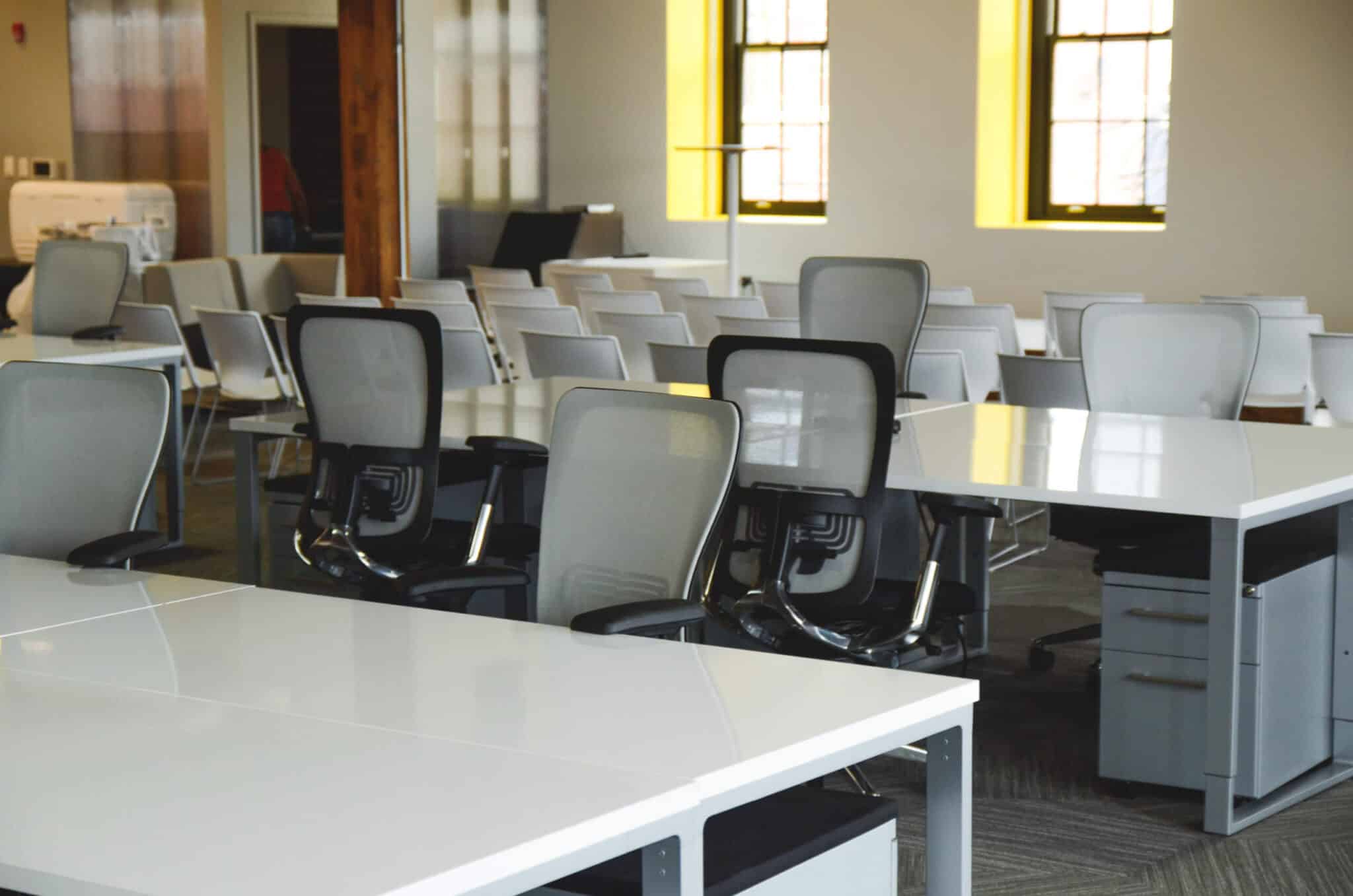Matthew Stegmeier told us if there’s one thing consistent about the way we work, it’s that it’s always changing. From technology upgrades to changes in the physical location and size of space in which we work, it seems there is always a new, better and more efficient way to operate.
In this Workplace Unplugged interview with Matthew Stegmeier, we wanted to find out more about how we can better adapt to the constant fluctuations of the workplace. Matthew is a consultant with Stegmeier Consulting Group, which specializes in helping companies implement Alternative Workplace Strategies.
We started our conversation with Matthew around the direction he feels modern workplaces trends have been heading in terms of office design and functionality.
MS: We’re working with companies who are readying employees for working in new ways; whether they might be in a different office environment or they have people working from home.
The trend these days is to move to a more open collaborative office environment that focuses on activity-based working, giving the employees the autonomy to utilize the space as it’s designed instead of having everyone in a cubicle all day.
While not everyone may be jumping on the open space office trend, every workplace evolves in one way or another. And, as a facilities manager, you’d be hard pressed to work in an office for a few years without having to experience the need for change management. Perhaps your lease is coming up and you are 12 months away from needing a new space and there’s a demand from a large portion of your staff for an open office environment. Or, maybe there’s a new mandate from Human Resources that 40% of your team will now be working from home. Stressful situations like these are not uncommon for the modern facilities manager.
So how do you best handle tough change initiatives? Matthew tells us that you don’t have to do it alone.
MS: During any of these workplace initiatives, the people who are running it still have their day job so they still have all their day-to-day responsibilities, but they now have this huge dramatic change happening on top of it. That’s where we can help, we take some of that burden off their plate. You might have someone on the communications team who is really talented but they don’t have the bandwidth to take that on, or they might not have the workplace experience where they know how to draft a good corporate communication piece in the voice of the organization. Or they’ve not been exposed to a change that involves a work environment and communicating something like that is a bit different. That’s something Stegmeier Consulting Group helps a lot of clients with in preparing everyone and getting the right messaging out at the right time.
And according to Matthew, the right messaging at the right time is key.
Matthew says a common mistake he sees managers make is waiting too late to communicate the workplace change. While it may seem daunting, he says it’s best to do it as soon as you can.
MS: Regardless of what transition you’re making, the longer you wait and the closer you get to that initiative taking place, rumors are going to pick up, and people are going to come to their own conclusions about what’s happening. You need to communicate early and often. A lot of times we get brought in on a project where someone’s moving in six months and employees have heard they’re losing a private office, when that might not even be the case. That’s a challenge that we face a lot, where clients and organizations have waited too long to start planning for a change and rumors start. People then start drawing conclusions like, ‘Okay well we’re losing our desk, it’s going to be a smaller space.’
Every good leader is well-versed in the ability to turn a challenge into an opportunity, and in change management that skill is even-more valuable. Matthew highlights how important it is to clearly outline the positive outcomes of a new initiative to ease the transition for staff as you implement an alternative workplace strategy.
MS: People often start scrambling and getting frantic about changes. If you’re leading Facilities or HR for an organization that’s making a change to their work environment, you’ve got a great opportunity to harness that change for a positive impact. It is important to be able to spell out the benefits, such as ‘This change is allowing us to reinvest in the people because we’re saving $2 million on real estate a year, we’re going to be able to invest in better technology because we don’t have to have this inefficient office that’s wasteful.’
Some of you may be thinking ‘It’s too late! Our lease is up in 3 months. I don’t have time to introduce a change management team.’ What to do? We asked Matthew for his advice.
MS: If you’re a company that’s changing your work environment, it’s never too late. The last thing you want to do is just seize up and say ‘Ah it’s too late, let’s just shut everyone in this new office and hope it works.’ You know people are eventually going to adapt to a change in the work environment but the question is at what cost? How much attrition are you going to have? How disengaged are employees going to be?
I don’t want to convey that if you don’t start doing change management until five months out you’re doomed because that’s not the case. However, you can have so much more success if you start early. In terms of our sweet spot, I would say if we’re contacted two years out that’s really helpful – even a year and a half we can still make really good headway. Ideally, within a year and a half prospective clients should be contacting us.
Now, how much does this change per industry? How will the approach towards change management vary?
MS: There’s a big commonality throughout all industries and that’s people. Any change you’re making is going to affect your employees, and people, in general, are the same in the way they deal with changes to the work environment. We tailor our approach differently to each client’s needs, but it’s not like we have to reinvent the wheel because we know our methodology has been proven over the past 13 years dealing with clients in a multitude of industries.
But, with great change comes great risk, especially in facilities management. Which is why with any change begs the question, ‘how much money will this cost the organization and will there be a solid ROI for this transformation?’ Matthew shared his two cents on handling the risk of change.
MS: A lot of organizations are afraid to make a change, they want to maintain the status quo and they think ‘What are the risks of making a change?’ I would say look at it from the other side of the equation ‘What are the risks of NOT making a change?’
 Benefits to making a change can include retaining current employees, boosting productivity, increasing workplace happiness, and attracting new talent. It’s no secret more millennials are entering the workforce each day. A major factor in where they choose to apply could come down to the fact that they cannot visualize themselves working in your 1980s inspired cubicle. They are a generation that believes they can make a difference and look for organizations that strive to do better.
Benefits to making a change can include retaining current employees, boosting productivity, increasing workplace happiness, and attracting new talent. It’s no secret more millennials are entering the workforce each day. A major factor in where they choose to apply could come down to the fact that they cannot visualize themselves working in your 1980s inspired cubicle. They are a generation that believes they can make a difference and look for organizations that strive to do better.
Essentially, change is necessary for any working environment and in life. So don’t fear it. Embrace it. And the faster you do, the better the result.
For more reading, Stegmeier Consulting Group’s founder Diane Stegmeier authored a book, Innovations In Office Design: The Critical Influence Approach to Effective Work Environments, which goes into greater depth about their approach and the strategy behind what they do.
Have you had to implement change recently? What was your approach and what advice would you have for other FMs? Let us know!
Photos: Unsplash, Startup Stock Photos, Startup Stock Photos, Startup Stock Photos







